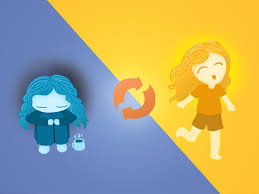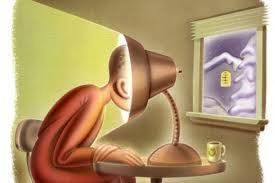Seasonal affective disorder (also called SAD) is a type of depression that occurs at the same time every year. If you’re like most people with seasonal affective disorder, your symptoms start in the fall and may continue into the winter months, sapping your energy and making you feel moody. Less often, seasonal affective disorder causes depression in the spring or early summer.
In most cases, seasonal affective disorder symptoms appear during late fall or early winter and go away during the sunnier days of spring and summer. However, some people with the opposite pattern have symptoms that begin in spring or summer. In either case, symptoms may start out mild and become more severe as the season progresses.
Fall and winter seasonal affective disorder (winter depression)
 Winter-onset seasonal affective disorder symptoms include:
Winter-onset seasonal affective disorder symptoms include:
- Depression
- Hopelessness
- Anxiety
- Loss of energy
- Heavy, “leaden” feeling in the arms or legs
- Social withdrawal
- Oversleeping
- Loss of interest in activities you once enjoyed
- Appetite changes, especially a craving for foods high in carbohydrates
- Weight gain
- Difficulty concentrating
Causes
The specific cause of seasonal affective disorder remains unknown. It’s likely, as with many mental health conditions, that genetics, age and, perhaps most importantly, your body’s natural chemical makeup all play a role in developing the condition. A few specific factors that may come into play include:
- Your biological clock (circadian rhythm). The reduced level of sunlight in fall and winter may disrupt your body’s internal clock, which lets you know when you should sleep or be awake. This disruption of your circadian rhythm may lead to feelings of depression.
- Serotonin levels. A drop in serotonin, a brain chemical (neurotransmitter) that affects mood, might play a role in seasonal affective disorder. Reduced sunlight can cause a drop in serotonin that may trigger depression.
- Melatonin levels. The change in season can disrupt the balance of the natural hormone melatonin, which plays a role in sleep patterns and mood.
Risk factors
Factors that may increase your risk of seasonal affective disorder include:
- Being female. Seasonal affective disorder is diagnosed more often in women than in men, but men may have symptoms that are more severe.
- Living far from the equator. Seasonal affective disorder appears to be more common among people who live far north or south of the equator. This may be due to decreased sunlight during the winter, and longer days during the summer months.
- Family history. As with other types of depression, those with seasonal affective disorder may be more likely to have blood relatives with the condition.
- Having clinical depression or bipolar disorder. Symptoms of depression may worsen seasonally if you have one of these conditions.
Light therapy for SAD
 In light therapy, also called phototherapy, you sit a few feet from a specialized light therapy box so that you’re exposed to bright light. Light therapy mimics outdoor light and appears to cause a change in brain chemicals linked to mood easing SAD symptoms.
In light therapy, also called phototherapy, you sit a few feet from a specialized light therapy box so that you’re exposed to bright light. Light therapy mimics outdoor light and appears to cause a change in brain chemicals linked to mood easing SAD symptoms.
Light therapy is one of the first line treatments for seasonal affective disorder. It generally starts working in two to four days and causes few side effects. Research on light therapy is limited, but it appears to be effective for most people in relieving seasonal affective disorder symptoms. Using light therapy may also help with other types of depression, sleep disorders and other conditions.
Facts about Seasonal Affective Disorder
- As many as 20% of the world’s population is affected with SAD.
- SAD is more prone to areas in which the disparity between summer and winter light are great, typically Northern regions.
- The number of female SAD sufferers outnumber the males by as much as 300%.
- Some more debilitating symptoms include: problems sleeping; change in appetite or weight; loss of memory; lack of concentration; severe depression; confusion and sexual dysfunction.
Light therapy for conditions other than SAD
In addition to seasonal affective disorder, light therapy is used as a treatment for other conditions, including:
- Jet lag
- Sleep disorders
- Adjusting to a nighttime work schedule
- Dementia
For more information contact Vancouver Sleep Solutions at 604-558-0055.

 Take The Sleep Apnea Self-Test
Take The Sleep Apnea Self-Test Physician Referral Forms
Physician Referral Forms 604-558-0055
604-558-0055